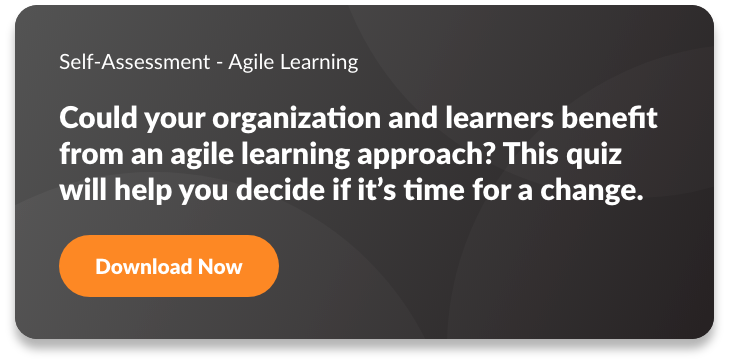Want to Transform Professional Learning for Your Workforce? Take a Page from the Agile Manifesto
We’ve all heard the adage “work smarter, not harder” and, wow, does it ever ring true. How often have we worn ourselves out to accomplish a goal, only to find that we could have achieved the same result with much less effort? How much time have we wasted because we didn’t know there was a better way?
This truth applies to professional learning as well. For too long, learning the tools of one’s trade has been arduous and oftentimes downright boring. Think back to when you were trained for your current job. How many binders did you inherit? How many hours did you spend watching dull videos that hadn’t been updated since 2005? You might have walked away with a certificate proving that you completed your course requirements, but I’ll wager those training methods did very little to help you become capable and competent in your role.
Isn’t learning supposed to be stimulating and (gasp) even fun? Couldn’t there be a way to learn smarter, not harder?
The answer is 100% yes.
An Agile approach to professional learning can help you create a digital learning experience that meets your employees where they are, gives them up-to-date information when they need it, and enables them to do their jobs effectively and efficiently.
Agile Learning Begins with Embracing a New Mindset
What does it mean to be Agile? The Agile Manifesto was created in the software development world. At its core, Agile promotes a collaborative, iterative, and flexible approach to work. After quickly gaining widespread popularity, Agile principles have been applied to a wide range of industries, including education.
Agile learning stands in stark contrast to ADDIE, which stands for Analysis, Design, Development, Implementation, and Evaluation. ADDIE is essentially the traditional waterfall approach to learning development. A waterfall model to producing content or systems design breaks stages, tasks and delvierables down into building blocks. Each one builds on the one that came before it in a sequential, linear way.
ADDIE took such a strong root in the professional training realm because, for many years (and still for many people), learning was considered to be a summative event. This makes sense, because as corporate training departments and the subsequent corporate universities that really sprung up and grew in the 1970's followed a learning model based on academia. Learners took a course, passed a test, and — voila — mission accomplished. Learning was complete.
Of course, we know now that this is not how people learn, and learning is never really complete. It's a journey, not a destination, right? This old waterfall mindset can be hard to shake.
An Agile approach operates completely differently and prioritizes speed, iteration, and collaboration. Here’s how the four overarching values from the Agile Manifesto apply to the world of workforce learning.
Agile Value #1: Individuals and Interactions Over Processes and Tools
In the context of professional learning, prioritizing individuals and interactions over processes and tools means offering your employees learning that's adaptive, engaging, and relevant. The old ADDIE way often resulted in a “drill and kill” mindset that forced employees to sit through long PowerPoint presentations, boring eLearning, or all-day workshops in order to comprehensively cover every detail of a topic.
By contrast, taking an Agile approach can give employees just-in-time, bite-sized information delivered in the flow of work. The content can be iterated on and reshaped as you learn more about how effective it is. This operationalizes the training process by marrying the context of the workplace and the specific job function to the learning materials. In short? Agile replaces dry textbook knowledge with beautiful, messy, helpful hands-on learning.
Agile Value #2: Working Software Over Comprehensive Documentation
A good, mobile-first Learning Experience Platform (LXP) automatically embraces the second Agile value of providing high-functioning software rather than comprehensive documentation. There’s no need for a 500-page manual that outlines every conceivable process and procedure when you have software that allows for a quick search on any topic.
Even better? An instantly updateable content library in your LXP will never be out of date, unlike that huge binder on your desk. Working software is current and relevant. Furthermore, it will proactively alert users about new, need-to-know information before they even have to look for it.
Ship it. Ship it early. Ship it often.
Agile Value #3: Customer Collaboration Over Contract Negotiation
This value speaks to the idea that it is more important to achieve the right result with a client than to adhere to a written contract line by line. How does this translate to learning? It encourages us to drop the top-down, hierarchical, and organization-driven mindset in favor of a horizontal, learner-centric approach. Consider the teacher the creator or vendor in this metaphor and the learner is the customer or client. The learner (customer) must be able to get value out of the arrangement without having to continue the negotiation and back and forth with the instructor (vendor/contract).
Learning isn’t just a one-way process in which a teacher imparts knowledge to a pupil. (e.g. force the contract terms on the client). Rather, learning can and should be collaborative. Think about the joy that comes from brainstorming with a group of smart, competent colleagues. Coaching, mentoring, and social learning offer powerful avenues for sharing knowledge.
Agile Value #4: Responding to Change Over Following a Plan
In previous incarnations of learning technologies and learning ecosystems, instructional designers operated as if there would only be one opportunity to reach each learner. Therefore, the material needed to be thorough, exhaustive, and absolutely accurate.
Agile Value #4 flies in the face of this prescriptive ideology and emphasizes the importance of continuous, iterative training. Information might be given in bits and pieces or quickly change as new techniques or best practices are discovered. Agile learning is inherently flexible and adaptable.
Taking into consideration Bob Mosher's and Conrad Gottfredson's 5 moments of need model, Agile learning serves for that time when things go wrong or when the situation has changed.
Think about it this way. In many companies, products grow and morph quickly because engineers and developers are constantly innovating and making improvements. This means that your employees need ongoing training as your products evolve, not a one-and-done workshop that will soon be obsolete. Processes, tools, and other business strategies move rapidly as well. Why should learning and development be any different? In this scenario, it’s better to provide them with the crucial pieces of the overall puzzle so they can function effectively until the big picture is complete.
A Robust LXP Brings Agile Values to Life
Now that you understand what Agile values are and how they apply to the professional learning landscape, how do you free your workforce to learn in this refreshingly natural way?
It starts by giving employees the information they need to do their jobs well — whether at their desk or out in the field. For example, say you’re a service technician who heads out to fix a broken solar panel. The initial work order informed you that panel AB was malfunctioning. However, after you’re already deployed, someone discovers that the work order was filled out incorrectly. The problem is entirely different than the one you’re currently equipped to fix.
With a modern, flexible, and mobile-first LXP like SparkLearn at your fingertips, you can easily search for solutions on how to address the newly-identified problem. What’s more, subject matter experts back at the office can update the platform in real-time, keeping you continually in the loop.
The Future of Learning is Agile
The best way to incorporate Agile values into your workforce development program is to use a mobile-first platform that already operates in an Agile way. This goes beyond taking your legacy learning modules and making them available in an app. An effective LXP doesn’t simply retrofit old methodologies into a new format. Rather, it functions like the most well-designed, intuitive consumer platforms on the market today. It's agile.
There are countless ways a robust LXP can support your Agile learning needs, and the good news is you don’t have to figure it out alone. We’re here to help.
If you’re interested in learning more about how the right LXP can promote Agile learning for your workforce, just reach out. We’d love to talk with you.
Continue the Conversation.
Speak with a specialist and learn how SparkLearn can improve your organization and the challenges you face.

